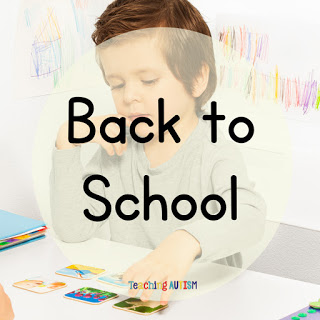Flexible Seating – What is it?
One of the most common trends in education recently is flexible seating. But, if you’re new to the classroom – or even experienced but haven’t seen it before, you may be wondering, what exactly is it?
This blog post is going to explain to you;
- What flexible seating is
- The pros and cons of using flexible seating
- My guidelines
- What to buy
- How to raise money to buy them
What is it?
So, first of all we’re going to discuss what flexible seating is. Flexible seating is basically where the seating options have been switched to be more flexible for your students. You’ll often see how we discuss not one lesson is suitable for all students – so we differentiate the activities for students to suit their needs or abilities. Well, why should chairs and desks be any different? Flexible seating is replaced with a seating arrangement where students can choose where they sit – and what type of seat they sit on. Many of my students – and probably yours too – find it very uncomfortable to sit on the standard classroom chairs, many walk off, wander, fidget etc. After introducing flexible seating options, and introducing different types of chairs, we immediately noticed a different in our children’s behaviour and attention skills.
Pros and Cons.
So, like everything, there is going to be pros and cons to using flexible and seating. It may not be suitable for your class – and that’s ok! All of our classes are different and require different things. Flexible seating works fantastic in my autism classroom – but that doesn’t mean it will be as great in yours.
Pros
- Giving students choice, gives them that extra bit of freedom and independence. We are big believers in promoting our students independence and being able to choose where they are going to sit.
- It can help to aide any sensory troubles that the students may have when sitting on certain types of seats. This may also help to reduce the fidgeting and uncomfortableness while also promoting their attention and behaviour.
- You can use certain areas of your classroom with the most ‘sought after’ flexible seats as your reward seats. Students can earn the chairs here.
- It helps the students to be more comfortable. Everyone has their favourite food, favourite drink – and they’re all going to have their favourite position to sit in or item to sit on too. Some may prefer hard objects to sit on, while others may feel more comfortable on soft objects like yoga balls.
- If it’s not working – you can change it! Sit down, write down what is and isn’t working then think up a plan on how you can improve it!
- There has been lots of research into the fact that sitting for long periods of time is not healthy. These flexible seating options provide students with that bit of exercise and movement needed to stop them from being stationary on their chair. The yoga balls are especially great for this.
Cons
- Giving students choice can be positive – but it can be a negative too. You may get conflict when students all want to sit on one particular chair. You may have students who can’t cope with choice and independence and need the prompt to help them.
- You may not have enough room to change your entire classroom into flexible seating. However, if you have designated work spaces to work from, you can start by introducing flexible seating here and seeing how you manage for space with this.
- It can be very pricey to start up. Many teachers fund items for their classrooms themselves, so the thought of funding a large amount of seating arrangements can be painful. Which is why I’ll share some money saving and fundraising tips with you today. Don’t forget it may not just be the seats you buy – you may need to alter your desks too, having to buy new desks.
- Time. And it’s one thing we never seem to have enough of. Setting up flexible seating can take time. You’re going to have to set it all up, arrange it how you think will work best, and explain the rules to your students – or show them how they should behave when using the different types of seats you’ll now have available.
- Transition. We all know how hard it can be for our students to stop using or playing with something that they are really enjoy – and sometimes it can be hard to direct them away from the seats.
My Guidelines on Flexible Seating
- Give it time. If it doesn’t work well with your students straight away, don’t fret! Give it time. Assess how it is going on a weekly basis and look at ways that it can be improved.
- Create a visual rule poster as well as small handouts that you can put on desks or pass to students when they may need reminding i.e ‘2 feet on the floor’
- Keep receipts. If any of your items break, try and take them back for a refund or exchange. This usually only happens with plastic crates/boxes.
- Try and have your school help fund the cost, fundraise, involve parents etc. Don’t do it all on your own.
- Use timers when it’s coming up to time to finish using the seating options or it’s coming up to time for transition so that students can see how long they have left on their seat.
- Work to the size of your room. Don’t worry about low tables or having everything! Whatever positive changes you can bring to your room – big or small – will have a huge benefit on your students.
What to Buy
This is tricky, because there’s so many different seating options out there now! I recommend just thinking about your students and what type of flexible seating they would like. If your students are able enough, take them along to shops to try different types of seating out – you may be surprised! Plus, it involves them more in their classroom set up.
Some of my favourite flexible seating options are (aff. links may be used where I earn a small % at no extra cost to you):
- Yoga Balls
- Yoga Balls with Secure Ring (to stop it rolling off!)
- Wobble Chair (a firm favourite with ours!)
- Wobble Cushion – these are great for adding to chairs if you can’t afford to replace every chair yet – or have the room!
- Wobble Stool
- Sit Spots (great for reminding your students where they can sit on the floor)
- Yoga Mats
- Bean Bags
- Scoop Chairs
- Laundry Basket – Turn it upside and put cushions on to have students sit on it. Or put a low blown up yoga ball inside to stop it moving around. Or I’ve seen where teachers have put a pillow and blanket in there and students sit in them and read books! It looks very relaxing.
Raising the Money
Now, as you may have seen, this can be quite a pricey thing to introduce to your classroom. So, now I’m going to share some great tips on how you can save money for this or fundraise.
- DonorChoose – if you’re in America. Unfortunately, I’m not. So I can’t offer a huge amount of advice on this, but it looks a great way to get extra money for your class.
- Speak to your school and see if they can offer any funding towards it.
- Speak to your schools PTA and see if you can fundraise together.
- Create an Amazon Wishlist and share it with friends, family, your children’s families – you never know who may be willing to help out!
- Set up fundraising activities – this can be out in your community or it can be in class. Have bake sales, or make items to sell like Christmas decorations.
- Look for discount codes on cash back sites so you can get a little bit of money back where you buy them from. Tesco is another great one where you could use club card points to save on buying – or collect club card points from your purchases to spend on other things.
- Ask parents for donations for vouchers for certain stores through the year or if they have any unwanted gift cards – this can quickly add up!
- Look on local sale sites – you never know what people may be selling and it’ll be at a cheaper price than buying from a store.








